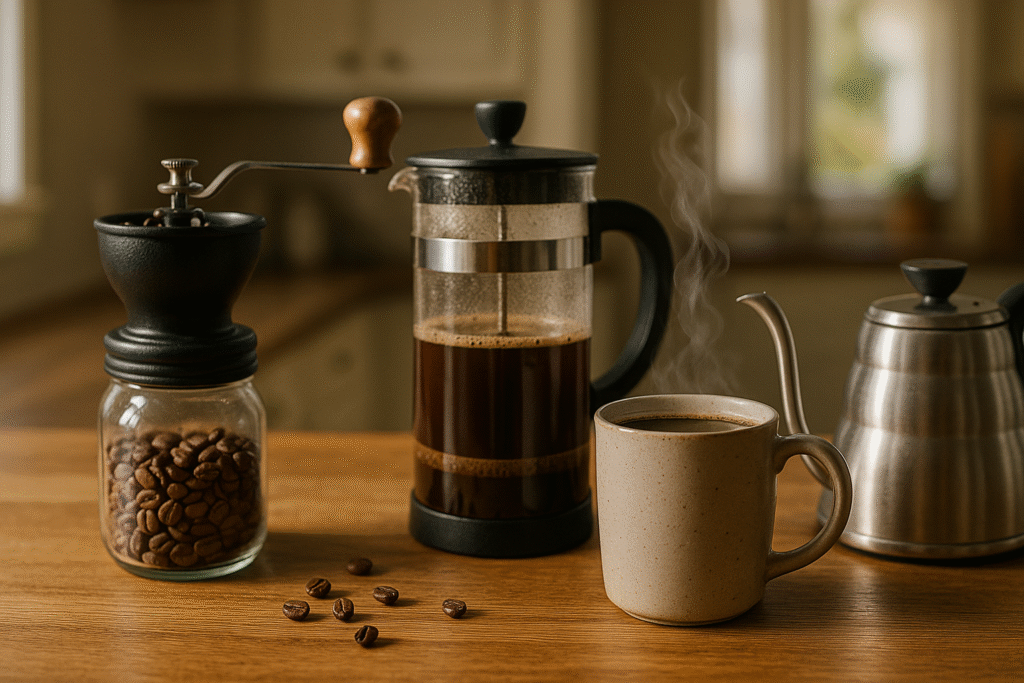Coffee is more than just a morning ritual; it’s a global passion that connects cultures, economies, and personal experiences. With so many different types of coffee available, it’s fascinating to explore the unique characteristics that each variety brings to the cup. In this article, we’ll dive into the most appreciated coffee types both in Brazil and internationally, revealing the rich diversity behind your favorite brew.
The Two Main Species: Arabica and Robusta
Arabica Coffee (Coffea Arabica)
Arabica is the most popular coffee species worldwide, accounting for about 60% of global production. Native to Ethiopia, Arabica beans are known for their delicate flavor, balanced acidity, and aromatic complexity.
- Flavor Profile: Sweet, fruity, and often with hints of chocolate or floral notes.
- Growing Conditions: Higher altitudes, cooler climates.
- Notable Regions: Brazil, Colombia, Ethiopia, Kenya.
Brazil is the largest producer of Arabica coffee, with regions like Minas Gerais and São Paulo famous for their smooth, nutty, and chocolatey beans.
Robusta Coffee (Coffea Canephora)
Robusta coffee is hardier and more resilient than Arabica, thriving in lower altitudes and hotter climates. It generally has a stronger, more bitter flavor and higher caffeine content.
- Flavor Profile: Earthy, woody, and sometimes with a nutty aftertaste.
- Growing Conditions: Lower altitudes, hotter and more humid environments.
- Notable Regions: Vietnam, Brazil, Uganda.
In Brazil, Robusta is primarily produced in the states of Espírito Santo and Rondônia, often used in blends and instant coffees.
Specialty Varieties and Hybrids
Beyond Arabica and Robusta, there are countless specialty varieties and hybrids that coffee lovers cherish for their unique flavors:
Bourbon
An Arabica mutation originally discovered on Bourbon Island (now Réunion), this variety is prized for its buttery body and sweet, caramel-like flavors.
Typica
One of the oldest Arabica varieties, Typica offers a clean cup with bright acidity and a balanced sweetness. It’s the ancestor of many modern coffee varieties.
Caturra
A natural mutation of Bourbon discovered in Brazil, Caturra has a compact growth habit and offers vibrant acidity and low-to-medium body—ideal for high-quality Brazilian coffees.
SL28 and SL34
Developed in Kenya, these varieties are celebrated for their intense fruity flavors and bright acidity, often considered among the best in the world.
Mundo Novo
A natural hybrid between Bourbon and Typica, Mundo Novo is widely grown in Brazil and valued for its resilience and rich, chocolatey flavor.
Brazilian Coffee Varieties You Should Know
Brazil’s diverse climate and topography allow for a wide range of coffee varieties. Some of the standout Brazilian types include:
- Yellow Bourbon: Known for its sweet, smooth profile and honeyed notes.
- Red Bourbon: Offers a deeper, richer flavor with hints of chocolate and nuts.
- Catuaí: A cross between Mundo Novo and Caturra, Catuaí is adaptable and widely grown, delivering sweet and pleasant cups.
Brazilian coffee is typically processed using the natural (dry) method, which enhances body and fruitiness in the cup.
International Coffee Varieties Worth Exploring
Ethiopian Heirloom Varieties
Ethiopia is the genetic birthplace of coffee, home to thousands of wild varieties. Ethiopian coffees are often floral, citrusy, and tea-like in body.
Jamaican Blue Mountain
Grown in the Blue Mountains of Jamaica, this coffee is renowned for its mild flavor, lack of bitterness, and smooth body. It’s one of the most expensive coffees in the world.
Kona Coffee
Produced on the slopes of Hawaii’s Mauna Loa volcano, Kona coffee offers a light, fruity, and nutty flavor profile that is highly sought after.
How Processing Methods Influence Coffee Flavor
The method used to process coffee cherries after harvest can significantly impact the final flavor:
- Natural (Dry) Process: Cherries are dried with the fruit intact, leading to a sweeter, fruitier cup.
- Washed (Wet) Process: The fruit is removed before drying, resulting in a cleaner, brighter taste.
- Honey Process: A hybrid method that leaves some fruit on the bean, balancing sweetness and clarity.
In Brazil, natural and pulped natural (semi-washed) processes are especially popular.
Choosing the Right Coffee for Your Taste
Understanding the different types of coffee can help you choose beans that match your personal preferences:
- If you enjoy sweet and mild flavors, opt for Arabica varieties like Bourbon or Typica.
- If you prefer a strong and bold cup, look for blends containing Robusta.
- For a fruity and vibrant experience, explore Ethiopian heirloom varieties.
- To savor a smooth and luxurious coffee, consider Jamaican Blue Mountain or Kona.
Experimenting with different origins, varieties, and processing methods can open up an entire world of flavors waiting to be discovered.
Final Thoughts: The Beauty of Coffee Diversity
The richness of coffee lies in its diversity. From the gentle hills of Brazil to the volcanic slopes of Hawaii, each variety tells a story of place, climate, and tradition. Whether you’re savoring a cup of Yellow Bourbon from Minas Gerais or a fruity heirloom from Ethiopia, every sip is a journey around the world.
By exploring different coffee types, you not only refine your palate but also deepen your appreciation for the craftsmanship and heritage behind every bean.
